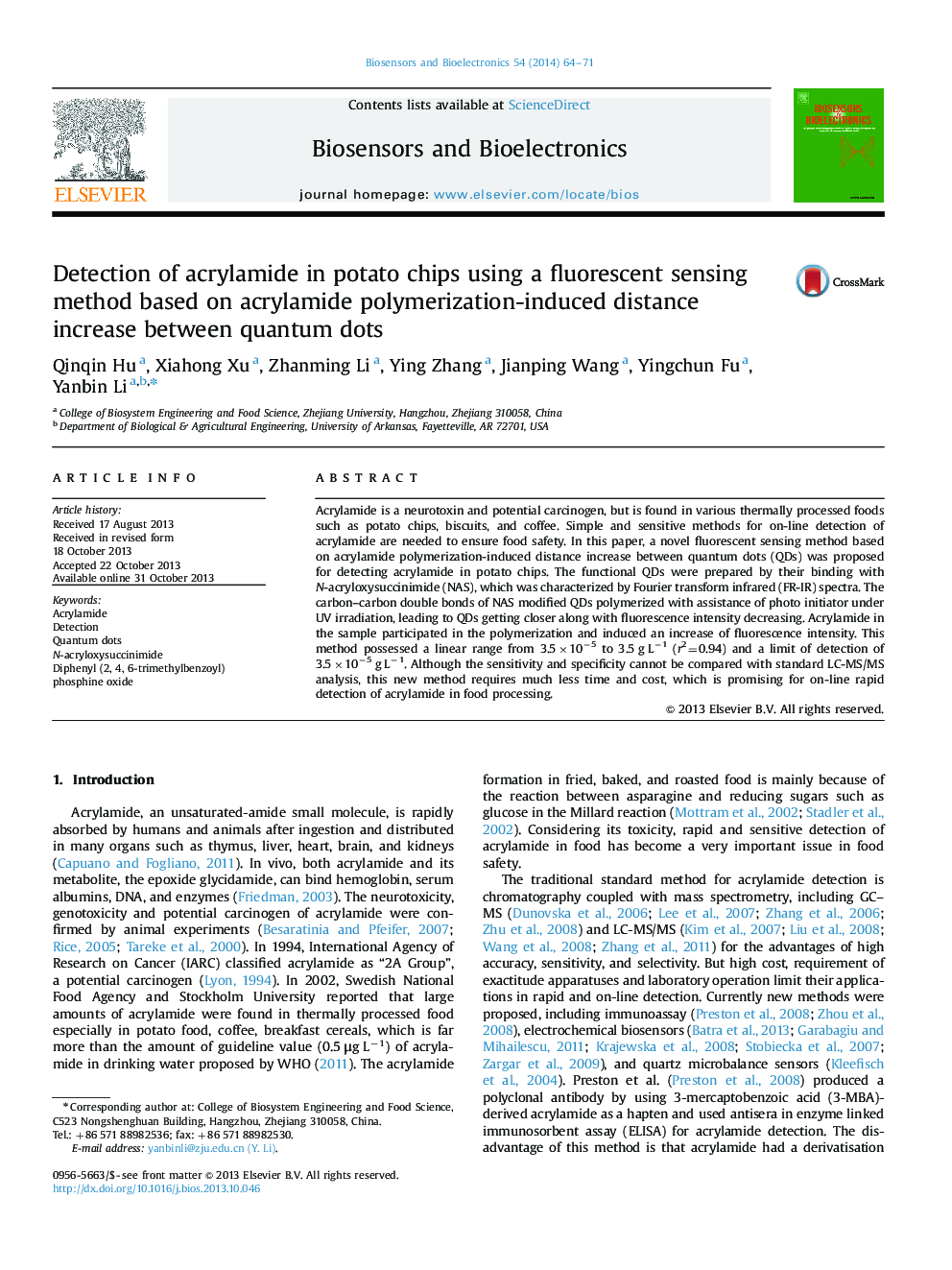| Article ID | Journal | Published Year | Pages | File Type |
|---|---|---|---|---|
| 7233644 | Biosensors and Bioelectronics | 2014 | 8 Pages |
Abstract
Acrylamide is a neurotoxin and potential carcinogen, but is found in various thermally processed foods such as potato chips, biscuits, and coffee. Simple and sensitive methods for on-line detection of acrylamide are needed to ensure food safety. In this paper, a novel fluorescent sensing method based on acrylamide polymerization-induced distance increase between quantum dots (QDs) was proposed for detecting acrylamide in potato chips. The functional QDs were prepared by their binding with N-acryloxysuccinimide (NAS), which was characterized by Fourier transform infrared (FR-IR) spectra. The carbon-carbon double bonds of NAS modified QDs polymerized with assistance of photo initiator under UV irradiation, leading to QDs getting closer along with fluorescence intensity decreasing. Acrylamide in the sample participated in the polymerization and induced an increase of fluorescence intensity. This method possessed a linear range from 3.5Ã10â5 to 3.5 g Lâ1 (r2=0.94) and a limit of detection of 3.5Ã10â5 g Lâ1. Although the sensitivity and specificity cannot be compared with standard LC-MS/MS analysis, this new method requires much less time and cost, which is promising for on-line rapid detection of acrylamide in food processing.
Related Topics
Physical Sciences and Engineering
Chemistry
Analytical Chemistry
Authors
Qinqin Hu, Xiahong Xu, Zhanming Li, Ying Zhang, Jianping Wang, Yingchun Fu, Yanbin Li,
